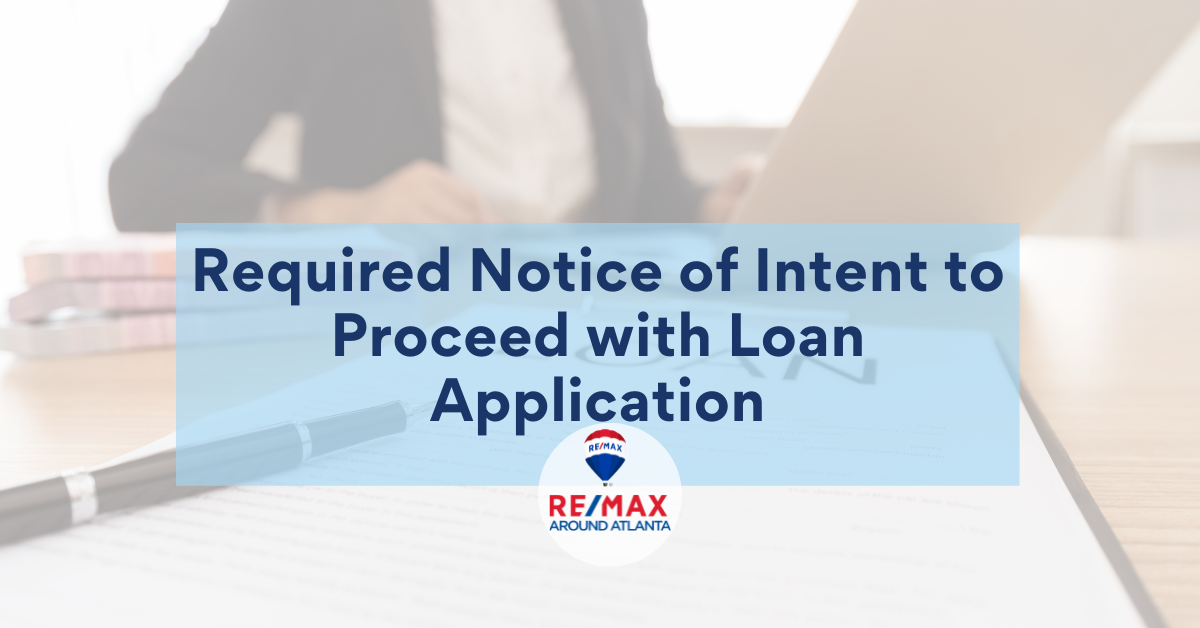|
If you have ever sold or leased a property and the agreement was on a non-GAR form,
it is very possible that your agency relationship, the RMAA Firm License number or your license number was omitted from the agreement. Sometimes the selling or leasing agent is not even mentioned in the non-GAR agreement at all. If you have an exclusive buyer brokerage agreement or tenant brokerage, the buyer or tenant is your client and you need to disclose all of the above to be in compliance with GREC. GAR provides 2 forms for agency disclosure for non-GAR contracts. One for sales and the other for leases. They are GAR F119 (Sales) and GAR F143 (Leases) The situation is easily handled one of 2 ways. 1. If the original purchase agreement or lease HAS NOT been bound and you are the named agent in the agreement, but your relationship to the client is not disclosed, an agency disclosure can be attached to the original purchase agreement or lease agreement. It discloses your relationship to the client. 2. If the original agreement HAS been bound, an exhibit will have to be added by amendment. The agency disclosure would be an exhibit to the amendment. The amendment will disclose your license numbers in the signature block. The exhibit will disclose your relationship to the client. All the amendment needs to say is “Agency Exhibit is hereby attached as Exhibit ____.” Sometimes, especially in builder contracts, just a license number is missing. In those cases, when you are signing your name, just include any missing license numbers in the signature block. If the relationship as a client is not disclosed, you can even add “RMAA Agent is working with the Buyer/Tenant as a client.” So long as the relationship and license numbers are disclosed, you are golden!
0 Comments
The federal government pays a lot of attention to lead based paint (LBP) requirements, so does GAR and so do we. The new 2023 GAR forms have 2 changes regarding LBP that you need to know. They are in 2 different documents, the listing agreement and the LBP disclosure exhibit.
The Exclusive (and the Non-Exclusive) Seller Brokerage Engagement Agreement (Listing Agreement) The listing agreement now includes a section that requires the Seller to complete and sign an LBP Disclosure at the time of listing and it is required to be attached to the listing as an exhibit, if the property or a portion of it was constructed prior to 1978. The new language alerts the seller that federal law requires the disclosure of lead-based paint in homes constructed prior to 1978 and eases the agent’s job of explaining to the seller why it has to be done. This is the language: Lead-Based Paint Disclosure. Federal law requires disclosure of lead-based paint in homes/residential properties, or a portion thereof, constructed prior to 1978. [select one below] a. A dwelling on the Property, or portion thereof, was constructed prior to 1978, Seller agrees to complete and provide Broker with a signed Lead-Based Paint Disclosure Exhibit (F316) at the same time as the signing of this Agreement and is attached as Exhibit “____”. OR b. No dwelling on the Property, or portion thereof, was constructed prior to 1978. The Lead Based Paint Disclosure Exhibit (LBP) New language in section (e) clarifies that the buyer has the right to a 10 day period to test for lead. This 10 day period is separate from any other due diligence or contingency rights and stands on its own unless the buyer waives the 10-day right at (e)(ii). This is the language: (e) Buyer has: [initial (i) or (ii) below]: (i) ___________________________ Received a ten (10) day opportunity (or mutually agreed upon period) to conduct a risk assessment or inspection for the presence of lead-based paint and/or lead-based paint hazards (prior to Buyer being obligated under the Purchase and Sale Agreement); or (ii) ___________________________ Waived the opportunity to conduct a risk assessment or inspection for the presence of lead-based paint and/or lead-based paint hazards (which shall not prevent Buyer from evaluating the Property for lead-based paint and lead-based paint hazards during any Due Diligence or Right to Request Repairs Period). Friendly Reminder Compliance officers for the Environmental Protection Agency will drop into real estate office unannounced to audit contracts for residential properties constructed prior to 1978. The fine for omissions and violations to the LBP law has just increased from $16,000 per violation to over $19,000 per omission. Either or both of the selling and listing agents can be fined. Yikes. Let’s get it right! There is a requirement in the Conventional, FHA and VA Loan Contingencies that a buyer is
required to promptly notify the seller of any mortgage lender to whom Buyer has sent a notice of intent to proceed with loan application, along with the name and contact information for the loan originator. Further, in another section of all 3 loan contingencies, there is a qualification that in order for a buyer to terminate without penalty (get their earnest money back) based on a loan denial, the buyer must have fulfilled all of the applicable requirements in the exhibit. That includes having promptly sent the notice of intent to proceed with loan application. Put another way, if the Notice of Intent to Proceed with Loan Application was not sent to the seller, the seller can legally keep the buyer’s earnest money even when the buyer was legitimately denied a loan and supplied the denial letter to the seller within the allowed time period. This is the relevant language: Buyer to Notify Seller of Intent to Proceed. When it is known, Buyer shall promptly notify seller of any mortgage lender to whom Buyer has sent a notice of intent to proceed with loan application and the name and contact information for the loan originator. Use of Approved Mortgage Lender and Loan Denial Letter. Buyer may terminate this Agreement without penalty based upon an inability to obtain the Loan(s) only if Buyer fulfills all of the applicable requirements set forth in this Exhibit. (at the bottom of the section) Notice Must be Sent Promptly What is “promptly?” It’s as soon as the buyer proceeds with a loan application. It is probably prior to ordering the appraisal. And if the loan is already in denial stage, it’s too late to send it. This requirement is not new. It has been in the loan contingencies for at least the last 2 years. What’s new is that we are now seeing that sellers are using an omission of the notice as a reason to keep earnest money, even when there has been a loan denial within the relevant time period and a good denial letter. Approved Mortgage Lenders and Pre-Approval Letters Including the name of an Approved Mortgage Lender and including a pre-approval letter from a lender are NOT substitutes for the notice. In fact, including the name of an approved lender in the financing contingency may not be to your buyer’s advantage because then a denial letter must come from that particular approved lender. Add the Notice to Proceed to Your Contract to Close Process You should add “Send Notice of Intent to Proceed with Loan Application” to your process. Yes, this is another step, but it is also another way to demonstrate your value to your client by managing the time limits and requirements to make sure clients are protected. Intent to Proceed is a step in the loan process which takes place between the Borrower and the Lender. The Buyer’s Agent needs to tell both Buyer and Lender to alert the agent once this is done. On the other side, if you are representing a seller as a client and you did not receive a Notice of Intent to Proceed with Loan Application from a buyer that did not qualify for a loan and is terminating for that reason, you should and must inform the seller of the option to retain the earnest money because ethe buyer has not fulfilled its requirements. Once again, this is another way to demonstrate your value to your client. Notice Form GAR 816 The general notice form from GAR should be used to send the notice. The language is simple: “The Buyer hereby notifies the Seller that Buyer has communicated their Intent to Proceed with Loan Application with (Lender) _______________, Loan Officer, ____________ at (contact information) _____________________.” What If the Buyer Decides to Change Lenders? If the buyer changes lenders, a new Notice of Intent to Proceed with new information must be promptly sent to the seller. In most contract situations, disclosure of agency, the type of representation and license numbers is pretty straight forward. The GAR Purchase and Sale Agreement includes disclosures in the Agency and Brokerage section and the signature block includes spaces to complete with the RMAA Firm License number and your personal license number. So long as the sections are completed correctly, you are golden. However, we are often forced to use non-GAR lease agreements and builder developer sales contracts that are not GAR based. In some cases, RMAA is not even included in the contract, even though we are acknowledged as the selling agent and we have a client relationship with the buyer or tenant. To be compliant with GREC and license laws and to protect yourself, make sure that RE/MAX Around Atlanta is included as the agency (whether RMAA is representing the party as a client or working with the party as a customer) and include the RMAA firm license (H-53737) and your personal license. The key is full disclosure to both parties. If all of the required elements are not included, the review will be asking for the paperwork to be corrected. GAR Forms to the rescue.
Missing License Number Can Be Added Builder/developer contracts often omit one or both of the license numbers, even if they include RMAA as the agency. Watch for both numbers! So long as you catch it before the contract is fully executed, you can write the missing information into the signature block area even if there is not a space for it. |
RMAAReal Estate News, Brokers Blog & More Categories
All
Archives
July 2024
|





 RSS Feed
RSS Feed